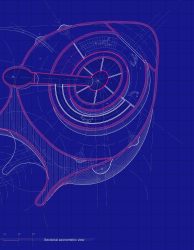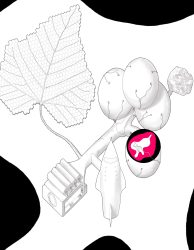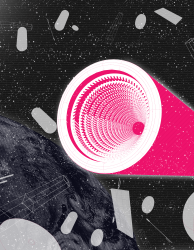
Interview with (a+b) design studio
(a+b) design studio: Annalisa Dominoni & Benedetto Quaquaro
1) Briefly introduce yourself and tell us a bit more about your practice. What do you work on specifically? What are the issues you aim to address in your profession?
We are architects and designers, PhD, and professors at Politecnico di Milano, School of Design, where we created and direct the “Space4InspirAction”, the 1st and unique Course of “Space Architecture and Design” in the world recognized and supported by the European Space Agency (ESA) with the collaboration of experts and scientists who define with us every year the design themes to be developed in line with the interplanetary exploration strategic programs of all space agencies and scientific community.
In addition to the educational and research activity we are often invited to scientific conferences and events as guest speakers to talk about space architecture, design, and fashion and to present our projects, and we also spend a lot of time in the laboratories of the European Space Agency and in contact with astronauts to understand from them how we can improve the well-being of living and working on the International Space Station.
We have more than twenty years of experience in researching and designing for Space, and we wrote more than 2 thousand scientific publications, papers, and books, which have contributed to define a new discipline in Space Design, and the role of Design in Space. The last book Annalisa wrote about Space Architecture and Design – “Design of Supporting Systems for Life in Outer Space” – has been published by Springer this year (Fig. 1) and present many examples that show the strategic role of Design for Space and, our projects related to research and teaching. Also, it underlines the importance of Design as a bridge between Space and private companies to boosting the new Space Economy.
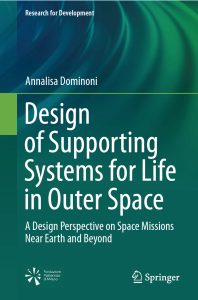
Fig. 1
The other half of us founded in 2011 the professional studio (a+b) dominoni, quaquaro, with the aim of making design in very different areas contaminating research and technological innovation with poetry. We believe multi-disciplinarity is very important, as well as the contamination of different areas of research and project: our work involves industrial design for the big industry, fashion tech, transportation, products and services, collections of objects and furniture, and limited editions for art and design galleries. Then there is a less traditional part, which is about designing space habitats, stations and Moon and Martian bases, in which we dedicate attention to design the best solutions including interiors, lighting, materials and colours according to the space specific conditions, as well as astronaut cloths, objects and tools to be used on board the International Space Station.
Among our latest projects there are the Leonardo trains of the Milan Metro designed for ATM and produced by Hitachi Rail Italia and the concept of a new space station designed for Thales Alenia Space that for the first time introduces an entire module dedicated to the entertainment of astronauts, not only experiments and facilities, but an environment to encourage recreation and relaxation, with design and style “made in Italy” (Fig. 2). We are very interested in exploring new technologies and applications by crossing different know-how, such as the acoustic object Pinna designed for Caimi Brevetti that was born combining the sound absorbing technology of Snowsound fabrics with the luxury fashion textile processing giving rise to a surprising shape, not only beautiful, but able to increases the acoustic performances (Fig. 3a, 3b, 3c).
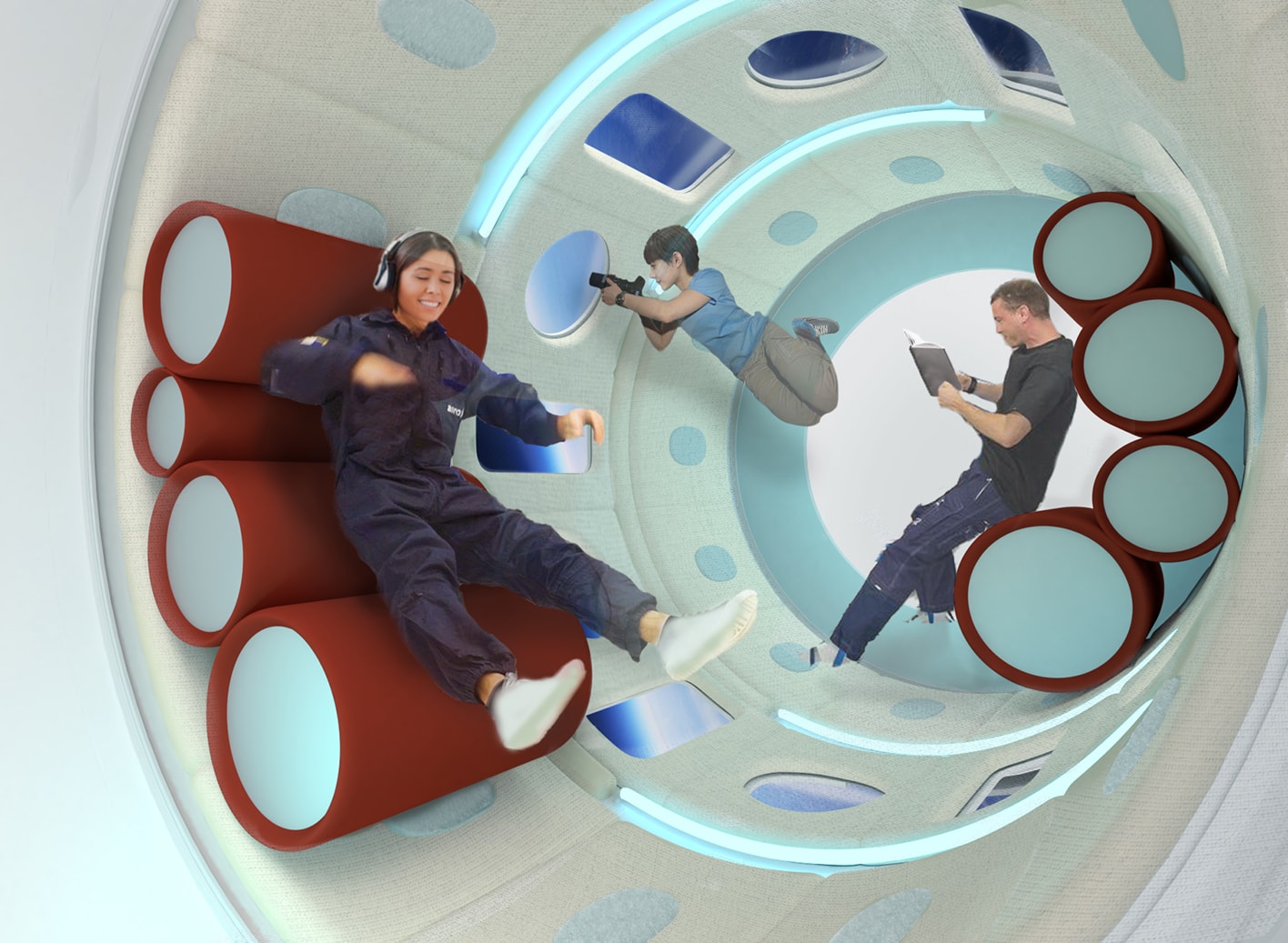
Fig. 2
Fig. 3a, 3b, 3c
2) Architects, designers and big businesses are increasingly turning their attention to space. What will design be like in space? What is space design?
We believe Space today, and in the near future, will have an ever more decisive influence on the daily life, habits, well-being and performance of people, and, consequently, on the transformative capacity of private companies to generate innovation and new business models, thanks to the strategic contribution of Design, because Design is visionary, is innovation, and is able to act as a “bridge” between science and beauty, speaking the different languages of engineering, technology, but also culture, art and economy, keeping at the center the needs of people, with the aim of increasing the quality of life, for a more ethical and sustainable world.
Design is something more and beyond the only shapes and surfaces of the objects and can play a much wider and more strategic role. We like to define Design approach as a problem-creating discipline, which generates innovation and increases people’s well-being, and this is true both in Space and on Earth. The Design places the human beings at the center, with a User-Centred Design (UCD) methodology, trying to interpret their needs in the most sustainable way: if an astronaut lives and works in a comfortable environment, with equipment and facilities designed properly to be used in Space, its performances increase as well as the quality of the activities, individual and collective, and can be determinant for the success of a mission. So, the most significant characteristic that distinguishes the designer’s approach is the pre-eminent attention to the users of the products.
In this third millennium, the human beings are definitely the protagonists of a “New Space Era” and have at last conquered a primary role within the scale of values that characterizes a human space flight: they are no longer only professional and super-skilled astronauts, with years of demanding training in preparation for the mission, but can be also scientists, researchers, and not least, tourists ready to experiment the “dream” of space travels, but not trained therefore to live in an extreme environment, in conditions of permanent emergency, with limited resources and services, to the detriment of their physical and mental well-being. The “New Space Human Being” is a person who wants to live in a comfortable way and, why not, has fun. This means that the whole environments must be totally re-thought and re-designed according to the physiological and psychological needs of the space travellers, as well as objects, facilities and tools for the daily life activities (living, working, sleeping, eating, taking care of ourselves, resting, etc.) which should make easier the life in Space trying to reduce the difference between living in Space and living on Earth. For these reasons, the role of Space Design is fundamental.
3) All the buzz around space tourism, can we say that a new style of spatial design is being born?
The great difference of living in Space is the absence of gravity, the extraordinary condition that is not part of our daily experience. If we can experience confinement on Earth as well – and lately thanks to the Covid-19, we’re all experiencing it while staying in our homes, and very often confronting problems that astronauts also have, such as lack of privacy, the stress generated by the impossibility of “getting out” or, in extreme cases, the alteration of circadian rhythms due to the lack of natural light – microgravity affects body posture, behaviours and relationships between people, the objects with which they interact, the environment. So more than a “style” we would speak of a space life that will be characterized by different gravity that will affect the solutions of furniture and artifacts.
Clearly, we can imagine that on the Moon and on Mars the interior of the bases will not change much structurally, they will only be lighter, but on the orbiting space stations in absence of gravity, as it is already partially experienced on the ISS, we will have to adapt the interior and furnishings so that they are comfortable and functional even without gravity. It takes an extraordinary ability to “use prediction” that we have encoded in a specific methodology called Use & Gesture Design (UGD) in which beyond the environment and the object must be designed simultaneously the use scheme. The challenge, for us, is to transform extreme environmental conditions from a limit to an opportunity, and then for example to try to design environments and objects that take advantage of microgravity, and not that they undergo it.
The task of architects and designers is to develop the ability to imagine how to live and move in confined environments and in microgravity, without environmental stimuli, privacy, the ability to use water to wash, and with objects that if supported start to float around, not to mention physical (postural, motor, ergonomic, physiological) and perceptual and emotional changes of the human body.
4) And can this style also be adapted to create new trends for objects to be used on Earth?
We are evolving towards a concept of space design “style” that is not only inspired by shapes and colours, but also materials, technologies, good practices, and behaviours that can be transferred from Space to new “space” objects for everyday life on Earth. A good example is the project Couture in Orbit.
The European Space Agency /ESA) launched the Couture in Orbit project in 2016 and asked us to create a collection of clothes to wear on Earth that would integrate space technologies and that was presented at the Science Museum in London with great success. For us, beyond the exciting experience, it is concrete evidence of how ESA has not only recognized the importance of design and fashion to inspire new scenarios and new product ideas, but also for the ability to attract a wider audience and communicate in a “glamorous” way the importance of scientific and technological research carried out in Space and its repercussions on everyday life.
Our capsule collection is inspired by the confined environment and microgravity that astronauts live on board the International Space Station. We looked at the activities in orbit and the relationships with objects, which without weight generate new behaviours and gestures, and we tried to find connections between the two environments, which apparently seem very different, but are both inhabited by human beings. The garments of our collection highlight how design can be a mediator between science and beauty and imagine new uses of space technologies that do not yet have applications other than the original.
Some garments integrate the cooling technology, which is used in the astronauts’ EVA suit during the Extra-Vehicular Activities to keep the thermoregulation constant, through a system of tubes sewn on the fabric in which heated water flows. Our project overturns the concept of space, makes visible the pipes outside the clothes, thus adding an aesthetic value to technology, as if it were an arabesque, and spreads by steam, instead of water, natural fragrances to balance the psycho-physiological well-being and reduce stress depending on whether the body requires more energy or relaxation (Fig. 4). Another garment in our Couture in Orbit collection is inspired by an ESA patent of an innovative antenna that amplifies the signal range thanks to a stellar configuration of small 3d cones: we propose it in 2d printed on fabric with conductive ink, maintaining the same pattern as the antenna (Fig. 5). We find interesting to underline how the technology applied to fashion and reinterpreted also in graphic key – the technological pattern is a beautiful circular design – can be translated into aesthetic value, and paradoxically exist even without technology. But if we use this technology, you can imagine the spread of this idea on sports clothing, but also on accessories, to amplify the signal in reception and transmission even in areas where there is little field, such as in the mountains or in the middle of the sea.
These are examples that demonstrate the power of Space imagery to generate, through Design, innovative products that can open large markets by combining technology and style. This is the trend of the new space economy.
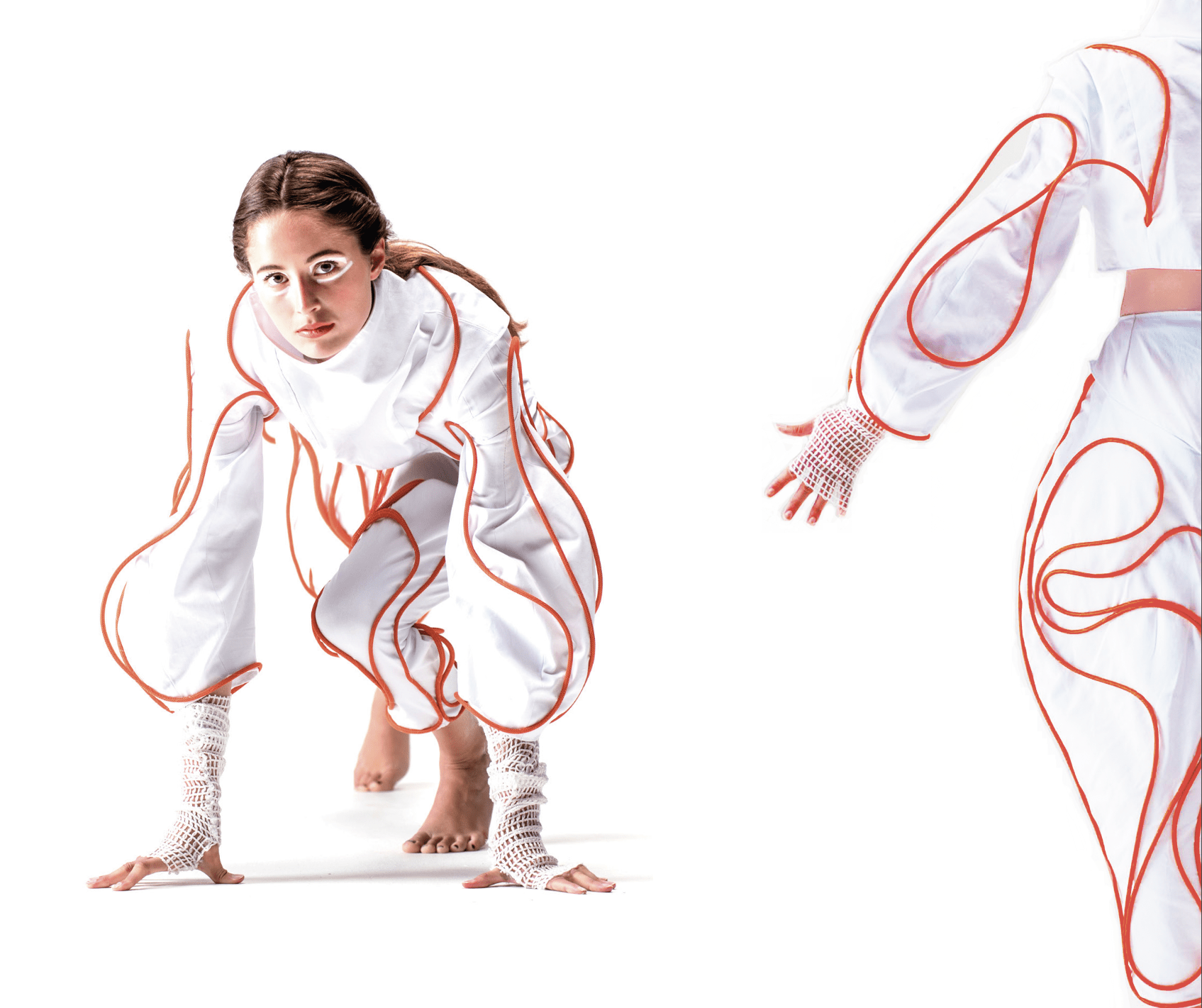
Fig. 4
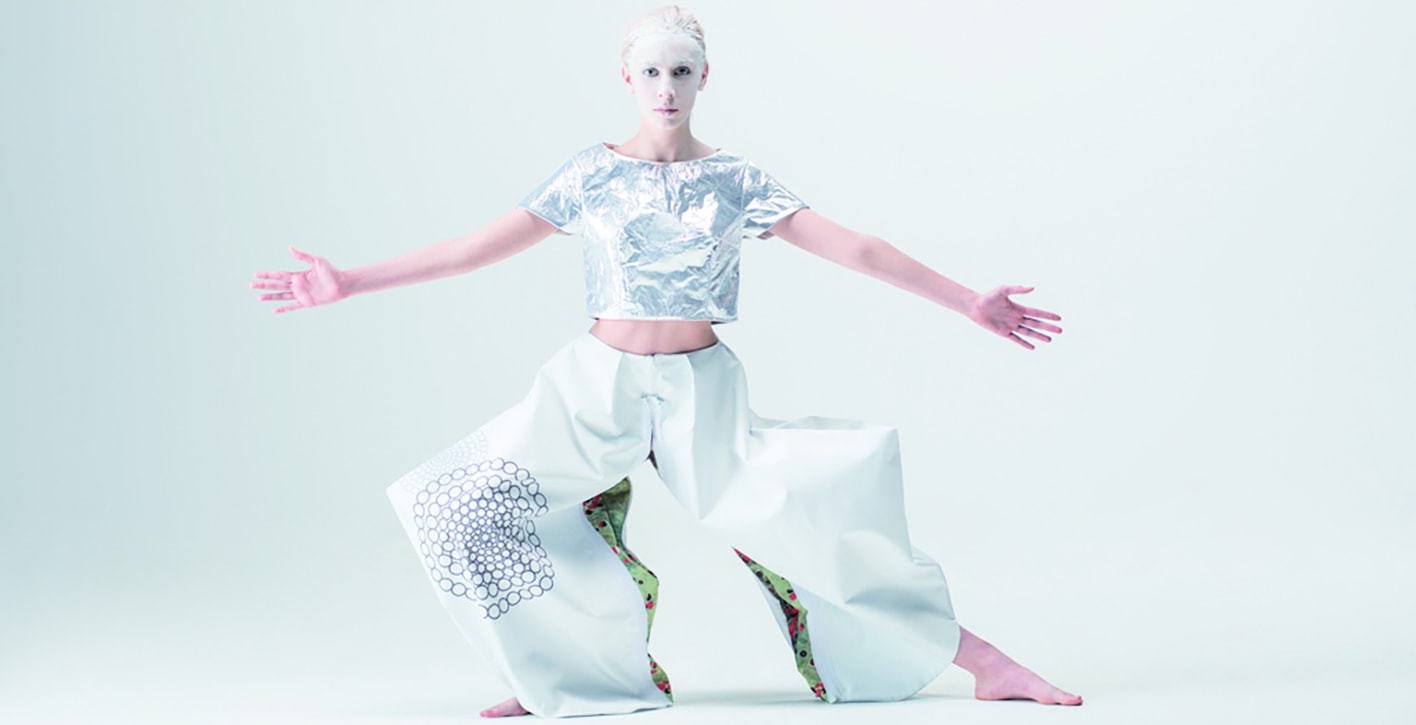
Fig. 5
5) With the hypothesis that people began to move to another planet, it would be necessary to think about the means of transportation. What do you think are the key aspects to consider for mobility in space?
The greatest challenge that we will have to consider in order to face interplanetary travels regards our ability to make the space station a completely self-sufficient organism, an autonomous habitation system regarding the energy and the terrestrial supply of resources – which mainly concern water, which is a valuable commodity not to be spent, food, nutritional supplements and medicines in case of need, and equipment that are currently periodically reloaded on the International Space Station – and with a management able to completely recycle the waste products.
A fascinating aspect of designing mobility in Space, which we addressed in a project proposed to our students of the Space4InspirAction Course, is to think about the gravitational adaptation of space travellers who will pass from Earth gravity to microgravity traveling in Space, but they will have to adapt once they reach even the reduced gravity, such as that of Mars, for example, which is 1/3 of that of Earth. So, designing a space station to accompany us in these transitions, which could be even more than one a day, preparing for the gravity that awaits us on another planet can be very useful.
Then we should think that traveling for a long time in Space, let’s say at least a year and a half, to reach Jupiter, will involve a routine that will have to provide spaces of entertainment, and not just work, rest and physical activity, that today are organized according to a very rigid schedule that does not leave much room for imagination and leisure. We will need more privacy, places to relax, but also places to carry out activities together to strengthen the sense of belonging of the crew. For example, in the new space station designed for Thale Alenia Space we have planned collapsible mobile textile partitions and chaise longues that allow more flexibility and different uses of space and guarantee privacy in an environment that is confined and traditionally open.
In confinement environment the quality of the living spaces assumes a greater importance because all the aspects that normally we would have to manage designing an interior assume extreme characteristics and everything is amplified: the noises, the light, the feeling that give us the materials, the prossemic relations, the interface with objects, the difficulties of moving or fixing in microgravity. Looking again at our new space station concept, the interior surfaces of the modules are dressed with an acoustic textile padding, able to reduce noise and increase sound isolation, creating sofa rings and giving a smooth feeling like a hug.
All these aspects require an interplanetary ship with more living space, more space for storage, more space for entertainment and leisure, and of course, more technology to solve the gap of communication with the Earth, a problem that we should consider in order to face long space travels finding new methods and tools to eliminate communication delay due to the speed of the electromagnetic wave in the vacuum in a unidirectional message. And this for two main reasons, the first more functional, the second personal and emotional: the opportunity to be supported by huge scientific teams in case of serious problems and the possibility to be in touch with family and friends reducing the sense of loneliness of infinity empty cosmic space.
6) In what terms can space design represent a virtuous resource for the future of humanity, avoiding the risk of falling into the same mistakes that have characterized our life on earth?
Design can inspire people to see the reality from another point of view designing new scenarios in which they can live in a better way. As designers, we should be aware to have a strong responsibility to shape our world, because we can drive ethical proposition working with companies, we can influence the behaviours and, if they become consolidated, the thoughts of people through the objects that we create for them, the environments that we design for them, we can improve the sustainability choosing green materials and processes, we can design a better future as well as on Earth that in Space because both the environments, even if apparently distant, are inhabited by human beings.
7) Is there a real risk if space travel truly does become cheaper and more accessible, with private citizens routinely visiting space?
The risk of space travel becoming widespread and more accessible is very likely, unfortunately, if we do not change the way we exploit resources and no longer acquire awareness of the danger we run by not thinking in the slightest about the consequences of our actions, in the medium term we will replicate in Space the same environmental disaster that we have caused on our planet. The problem of the increase in Space debris resulting from space activities was already serious in 2001 and is increasingly urgent, today there are about 10 thousand waste catalogued larger than 20 centimetre. The International Space Station releases tons of garbage into the Earth’s orbit which contributes to increasing Earth’s pollution, not to mention the light pollution caused by satellites which increased by 10% even in the darkest places of the Earth. So now the paradox is that we are forced to go into Space outside the Earth’s atmosphere as tourists because on our planet looking at the sky we no longer see the stars.
8) Could you please share some pearls of wisdom for young designers? What are your suggestions to young, up and coming designers?
We feel very lucky because we do a job that we like a lot and we are passionate, so find your passion and follow it!!! Designers have really the possibility to change our world, as we have already said, also we are living in a very interesting period that requires a great vision of the future. We always tell our students when they ask us for advice to choose a job that would do even for free, and laughing we say that being a designer is always better than working. Work is more than half of our life, if there is no curiosity and passion it becomes boring, it becomes sacrifice. Having the good fortune to choose a creative work as designer is a privilege of few unfortunately, but you are the future and you have the possibility, and also the responsibility, to make it better, to adapt it to your vision. So, aim high and put all your efforts to realize your dreams! Success will surely come ;-)))





